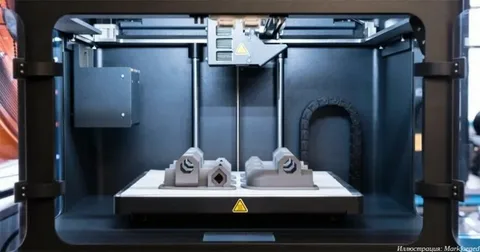In recent years, the consumer products industry has witnessed an incredible transformation, largely driven by technological advancements. Among these, Artificial Intelligence (AI) and 3D Printing have emerged as groundbreaking innovations, reshaping the way products are designed, manufactured, and consumed. Together, AI and 3D printing offer tremendous potential, enabling businesses to enhance efficiency, customization, and sustainability in ways that were previously unimaginable.
This article delves into how AI and 3D printing are revolutionizing the consumer products landscape, focusing on key developments, challenges, and the future impact of these technologies on various industries. From streamlining the design process to reducing production costs, AI and 3D printing are setting the stage for the next phase of industrial evolution.
Revolutionizing Product Design and Customization
AI and 3D printing are allowing businesses to rethink how consumer products are designed, with AI facilitating the development of smarter designs while 3D printing offers the ability to bring these designs to life with incredible precision. Traditionally, product design followed a more linear and standardized path, often resulting in mass-produced items with limited customization options. However, with the introduction of AI-driven design software, designers can now create more complex, functional, and innovative products that cater to specific consumer needs.
The integration of AI into the design process has made it possible to analyze vast amounts of data, identify trends, and predict future demands. This leads to more personalized products tailored to individual preferences. When combined with 3D printing, which allows for on-demand manufacturing, customization becomes more efficient and accessible. For example, companies like Nike and Adidas now offer consumers the ability to design their own footwear with unique patterns, sizes, and colors. The combination of AI and 3D printing gives businesses the agility to respond to shifting market demands and provide bespoke products that were previously cost-prohibitive to produce.
Enhancing Manufacturing Efficiency and Reducing Costs
One of the most significant advantages of AI and 3D printing in the production of consumer goods is the potential for cost reduction and efficiency improvements. Traditional manufacturing methods involve complex supply chains, mass production processes, and significant waste due to excess material use. However, 3D printing, also known as additive manufacturing, eliminates much of this waste by building products layer by layer, using only the material needed. As a result, companies can significantly reduce material costs, minimize inventory, and streamline their manufacturing processes.
AI also plays a crucial role in optimizing production efficiency by analyzing real-time data from the production floor, identifying bottlenecks, and suggesting improvements. In many cases, AI-driven predictive maintenance can foresee equipment failures before they happen, reducing downtime and extending the lifespan of machinery. This combination of AI and 3D printing creates a more agile, flexible manufacturing process, enabling businesses to quickly adapt to changing demands and reduce operational costs. Companies such as General Electric (GE) and Ford are already leveraging these technologies to produce complex components with reduced lead times and lower costs.
Promoting Sustainability in Consumer Products
Sustainability has become a critical focus for businesses in recent years, driven by both consumer demand and environmental concerns. AI and 3D printing are playing an essential role in helping businesses create more sustainable consumer products by reducing waste and improving resource management. 3D printing allows manufacturers to use only the material required for production, resulting in less scrap and excess material. This is particularly beneficial for industries that rely on expensive raw materials, such as aerospace or automotive manufacturing.
AI further contributes to sustainability by optimizing the design process to reduce material usage without compromising product quality. AI algorithms can simulate various design alternatives, helping to identify the most efficient and eco-friendly solutions. Additionally, AI-powered data analytics can optimize the supply chain, ensuring that raw materials are sourced responsibly and used efficiently. Companies like IKEA and Adidas are leading the way in sustainability, using 3D printing to create eco-friendly products and packaging, and relying on AI to reduce energy consumption in their operations. As consumer demand for sustainable products grows, AI and 3D printing will continue to be at the forefront of driving positive change in the industry.
Changing Consumer Experience Through Personalization and On-Demand Production
The rise of AI and 3D printing has also paved the way for entirely new consumer experiences, where products are increasingly personalized and produced on demand. The traditional model of manufacturing and distribution, which involves mass production and inventory stocking, is slowly being replaced by a more agile, consumer-driven approach. AI allows businesses to analyze consumer behavior and preferences, helping them offer highly personalized product recommendations. In turn, 3D printing makes it possible to produce these personalized products without the need for expensive, large-scale manufacturing.
This shift towards personalization is particularly evident in industries such as fashion, footwear, and accessories, where consumers are looking for products that reflect their unique tastes and lifestyles. For example, companies like Custom Ink and Shapeways allow customers to design and customize a wide range of products, from t-shirts to jewelry, with the assistance of 3D printing technology. The combination of AI-driven insights and 3D printing technology ensures that products are made to order, minimizing waste and excess inventory. This approach not only enhances the customer experience but also enables businesses to offer a broader range of options without the need for additional resources or infrastructure.
Future Implications and Challenges
As AI and 3D printing continue to evolve, their impact on consumer products will only grow stronger, but there are also challenges that need to be addressed. One of the key challenges is the scalability of 3D printing in large-scale manufacturing. While 3D printing is ideal for small batches or customized products, producing large volumes of consumer goods efficiently remains a hurdle. However, advancements in 3D printing technology, such as the development of faster printing methods and more versatile materials, are expected to overcome these challenges in the near future.
Another challenge lies in the integration of AI into the manufacturing process. While AI can provide valuable insights and improvements, it requires a significant investment in technology and data infrastructure. Additionally, businesses must ensure that their workforce is equipped with the necessary skills to work alongside AI systems. Despite these challenges, the future of AI and 3D printing in the consumer products industry is incredibly promising. As the technologies mature, they will unlock new possibilities for innovation, efficiency, and sustainability, transforming the way products are created and consumed.
Conclusion
The fusion of AI and 3D printing is transforming the consumer products industry in profound ways. These technologies are revolutionizing the product design process, improving manufacturing efficiency, and promoting sustainability. Additionally, AI and 3D printing are changing the consumer experience by enabling greater product personalization and on-demand production. While challenges remain, the future of these technologies in consumer products is promising, offering exciting possibilities for businesses and consumers alike. As AI and 3D printing continue to advance, their impact on the industry will only deepen, driving innovation and shaping the future of consumer goods for years to come.
By harnessing the power of AI and 3D printing, companies can stay competitive, cater to evolving consumer demands, and contribute to a more sustainable and efficient manufacturing ecosystem. The synergy between these technologies represents the future of consumer products, paving the way for a new era of innovation and possibilities.


